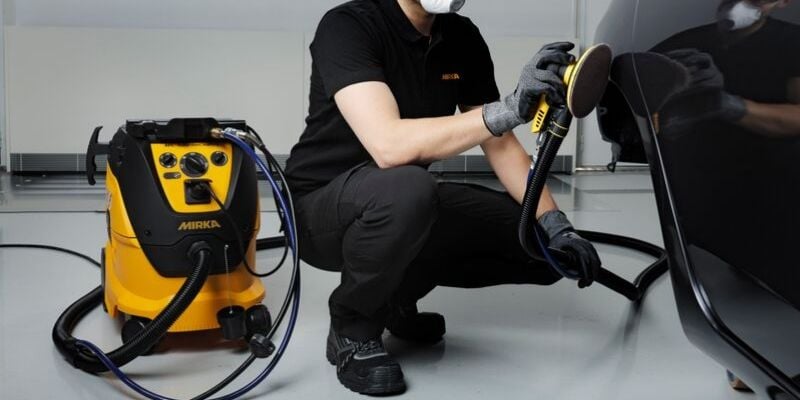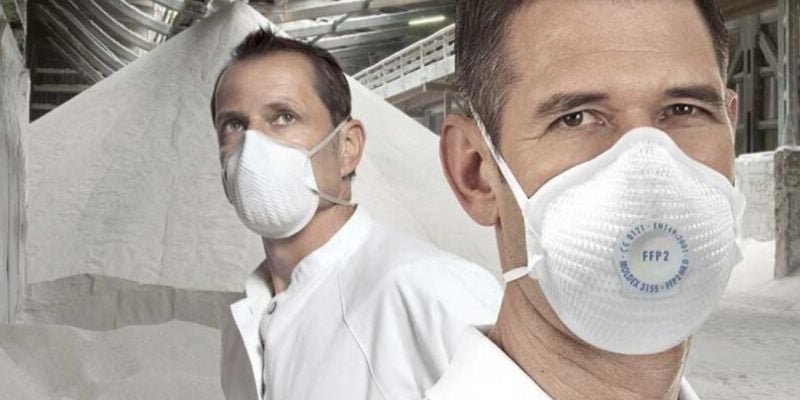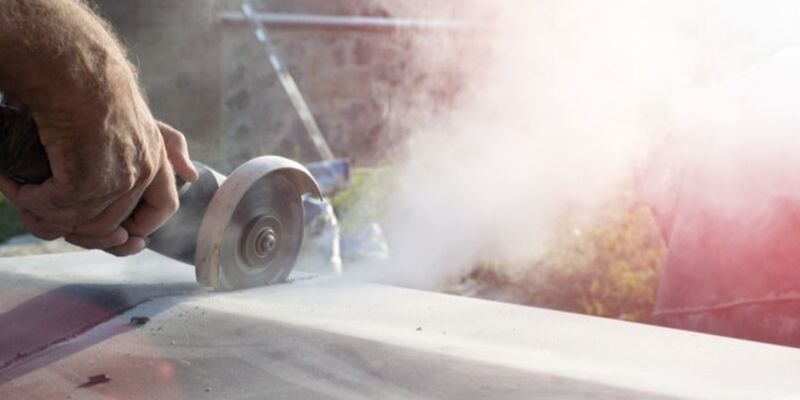Dust extractors explained

Dust extractors are an essential part of sanding whether you're a DIYer or a professional. They provide a clean environment when working and prevent harmful dust particles from being inhaled. Although dust extractors help to remove high levels of dust they should always be accompanied by a dust mask and not be used as a substitute.
There are a number of dust extractors on the market from different brands, in this article, we will only be looking at the range from Mirka but you may be able to apply points from this article to other extractors on the market. Let's begin.
What is a dust extractor
The term 'dust extractor' is quite a broad one and can cover a variety of different types of dust collection machines from power tool extractors to chip extractors and beyond. The extractors within the Mirka range are designed to extract fine dust that is produced whilst sanding, however, they can also be used as a wet and dry vacuum when combined with the Mirka vacuum kit.
These extractors work by collecting dust from the sanding surface through a vented backing pad and an abrasive that has holes in, or in the case of Abranet abrasives that have a Net construction allowing dust particles to pass through. The vacuum mechanism sucks the dust up through the sander and into the extractor which contains a bag that can be thrown away or emptied. All Mirka extractors have in-built filters that help to keep the extractor clean, this also helps to prevent the vacuum from losing suction during use.
110V or 230V Extractor
When using an extractor with a sander you need to ensure that the voltage level of the sander matches the extractor or that you have the correct transformer fitted. Most extractors are 230V but when using the extractor on site you may be required to only use a 110V version. If this is the case and you are using a 230V sander you will need to purchase a 110V transformer to convert it to 110V.
Sander compatibility
One question we get asked a lot is, can I use my Mirka extractor with another brand of the sander. The simple answer to this is yes, although we always recommend using a Mirka sander with a Mirka extractor for the best performance. If you do want to use another brand of sander with a Mirka extractor then you will need the correct size hose fitting. Mirka extractors require a 27mm hose connection so you may require an adaptor to fit the Mirka hose to a non-Mirka sander.
Dust Classes explained
When it comes to the class of the extractor there are a couple of different options, within the Mirka range, there are L-class and M-Class. This indicates the dust class of the extractor. In terms of the filters inside the M-Class and L-Class extractors, they are the same, the main difference between the two is that the M-Class has an audible alarm that sounds when suction drops below the optimum level. Below is a bit more information about the different dust classes.
L-Class
This dust class stands for 'Light'. The dust which belongs to this class is dust with OEL values of greater than 1mg/m3. The extractor cannot be used to pick up the following materials:
- Hazardous dust
- Hazardous dust with OEL values < 1mg/m3
- Hot materials (burning cigarettes, hot ash, etc)
- Flammable, explosive, aggressive liquids (e.g. petrol, solvents, acids, alkalis etc)
- Flammable or explosive dust (e.g. magnesium or aluminium dust etc)
M-Class
This stands for dust class 'Medium'. The dust which belongs to this class is dust with OEL values of greater than 0.1mg/m3 as well as sawdust. The extractor cannot be used to pick up the following materials:
- Hazardous dust
- Hazardous dust with OEL values < 1mg/m3
- Hot materials (burning cigarettes, hot ash, etc)
- Flammable, explosive, aggressive liquids (e.g. petrol, solvents, acids, alkalis etc)
- Flammable or explosive dust (e.g. magnesium or aluminium dust etc)
Mirka dust extractors in detail
1025L
The Mirka 1025L is the base model in the range, it is also the smallest in the range with a 25-litre container. Although all of the extractors in the range are portable the 1025L is favoured by trades such as decorators thanks to its portability. It has a lower vacuum power of 210mbar compared to 250mbar on the 1230 version.
The 1025L also has a lower volume flow (air) of 3500 litres/minute. However, this is still an extraordinary amount of air per minute so the extractor will provide excellent dust extraction when sanding walls during decorating or wood sanding.
Related Content: How to change the dust bag on a Mirka Dust Extractor
1230L and 1230M
The 1230 model is available in both L class and M class and also in 230V and 110V and has a larger container size of 30-litres and a higher vacuum power of 250mbar. The 1230 versions are also slightly quieter during use compared to the 1025L. The downside is that they are larger and therefore take up a bit more space.
In terms of airflow volume, the 1230 versions have a higher volume of 4500 litres/minute which gives greater suction and therefore removes more dust (up to 99%) during use. This means less cleaning up when the job is finished.
The 230V option of the Mirka 1230M has an Autostart function (AFC), this means that the extractor automatically cleans the filter for you during use. The L-class version and the 110V version do not have this and require you to push a button on top of the extractor at regular intervals to clean the filter and prevent loss of airflow.

Another feature of the 1230M extractors is the ability to install a HEPA (High-efficiency particulate air) filter. This takes the extractor from an M class to an H-Class. There is a caveat to this however, according to HSE doing this would not mean the extractor officially passes as a H-Class extractor on site.

Final word
If you are working in an area of dust such as woodworking or wall sanding we always recommend using some form of dust extraction and the portable versions from Mirka are ideal. As we mentioned at the start though this should always be used with a form of face mask for complete protection.
If you require any more information on dust extraction please call us on 01827 255250.




